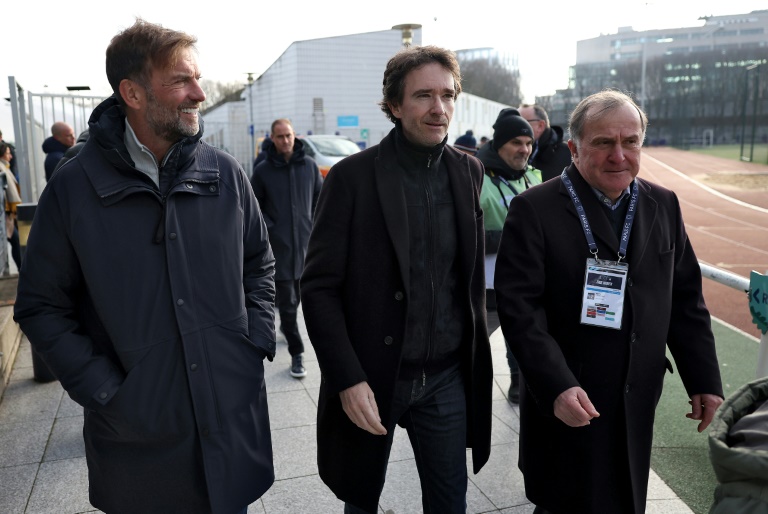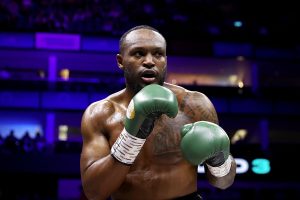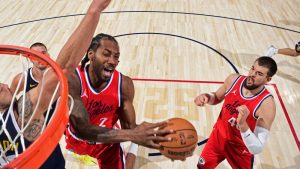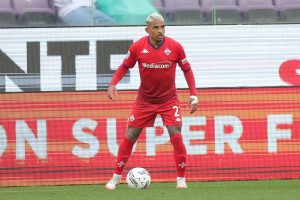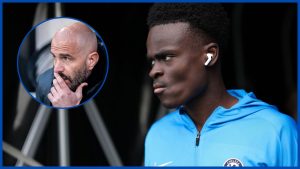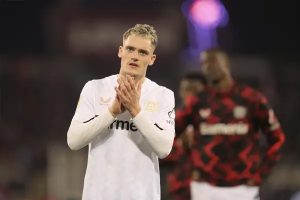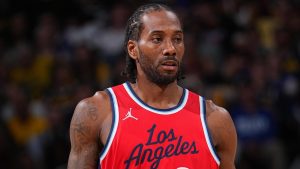
Paris has everything — stunning architecture and arguably the best food and fashion in the world. But the French capital lacks one essential element of a modern metropolis: it has no football rivalry.
Despite Qatar-owned Paris Saint-Germain (PSG) spending vast sums in recent years assembling a team featuring superstars like Lionel Messi, Neymar and Kylian Mbappe, and the club reaching this season’s Champions League semi-finals, the city has never truly been a football crucible.
Yet the Paris region is probably the world’s hottest football talent factory.
Twenty-nine players from the greater Paris area went to the 2022 World Cup in Qatar, including 11 members of the France squad which reached the final, with others representing the likes of Portugal, Cameroon, Tunisia, Senegal and Morocco.
But Paris, the biggest urban area in the European Union with a population over 12 million, has had only one club in France’s top division — PSG — since Racing Paris were relegated 35 years ago.
London has seven clubs in the Premier League, while Madrid, Milan, Rome, Barcelona and Athens all boast multiple top-tier teams.
That may be about to change thanks to one of the wealthiest families in the world.
Bernard Arnault has spent most of the last five years jousting with Elon Musk for the title of richest person on the planet, according to Forbes magazine.
The dip in the luxury goods business has seen him recently slip to merely the richest man in Europe, with a estimated fortune of around $190 billion.
The founder of LVMH, the luxury goods conglomerate that owns fashion brands like Dior, Louis Vuitton and champagne producer Moet & Chandon has the money and the marketing muscle to move mountains.
– The Arnault project –
Last November his family took a majority stake in a small club called Paris FC, with his eldest son Antoine — a football fan and former PSG season ticket holder — saying they wanted to turn it into a force to be reckoned with.
The family have linked up with former Liverpool manager Jurgen Klopp in a bid to take Paris FC from second-tier Ligue 2 into France’s top division and eventually, it is hoped, to the Champions League.
“It is an ambitious project but not an unrealistic one,” Arnault insisted, with the club’s logo, featuring the Eiffel Tower, on the wall behind him.
There is only one problem.
Average attendances at the club’s Stade Charlety home had been hovering around 3,000 until Paris FC began giving away free tickets. That is a long way off the 47,000 sell-out crowds at PSG.
And Charlety, an athletics arena, “is a stadium where you cannot create an atmosphere,” said Klopp, who is now Red Bull’s head of global soccer.
“It has been a long time since I watched a game from that far away,” he declared after watching his first match there.
But the Arnaults have plans. Next season the club will move to the Stade Jean-Bouin, across the road from PSG’s home, the Parc des Princes, in the upmarket 16th arrondissement.
– PSG’s backyard –
While setting themselves up literally in PSG’s backyard might seem provocative, Antoine Arnault, 47, is typically smooth about the positioning.
“You will never hear me say anything negative about PSG,” he said.
Instead, he said, they want to tap the Paris region’s rich seam of young footballing talent.
“We want to build a team where we will have five, six, seven or even eight players who have come through the youth academy,” said Antoine Arnault, whose brothers and elder sister, Delphine, are also involved.
France can currently field almost an entire team of Parisian players, including captain Mbappe and Premier League stars Ibrahima Konate — who was at Paris FC as a youth — and William Saliba.
Like Thierry Henry, Paul Pogba and others before them, they crafted their skills on the streets and pitches of the city and its grittier suburbs, called the “banlieues”.
“The Paris region represents the perfect convergence between a real hothouse football environment and access to excellent facilities and coaching,” said Tom Williams, author of “Va Va Voom: The Modern History of French Football”.
– Hothouse suburbs –
It has almost 330,000 registered players, more than the number of rugby players in the entire country, with over 5,000 technical staff plus 27,000 volunteers.
Its coaching structure has developed an exceptional level of football at the youth level, said Ligue de Paris president Jamel Sandjak.
“It is so strong in terms of quality,” he told AFP.
The multicultural make-up of the banlieues, with large populations of first-, second- and third-generation immigrants from France’s former colonies in North and West Africa, is key to why football thrives there, Sandjak said.
The PSG squad currently features a smattering of Parisian talent but last year lost talisman Mbappe — from the banlieue of Bondy — to Real Madrid.
They recently signalled an intent to focus more on fielding local players, but Paris FC are hoping to outdo their neighbours.
“It is just as much our dream to become the best youth academy in France one day as it is to become French champions and play in Europe,” said club president Pierre Ferracci, who is set to stay on till 2027 under the deal with the Arnaults and Red Bull.
“The dream is to perhaps one day resemble La Masia,” Barcelona’s fabled academy, he said, which produced Messi, Pep Guardiola and so many more great players.
The Arnault family’s financial power is such that they could repeat what the Qataris did at PSG, but they insist that will not be the approach.
“We don’t tend to throw our money out of the window,” said Antoine Arnault.
– ‘The planets aligned’ –
The family’s arrival at Paris FC did not entirely happen by design, insiders say. Antoine Arnault was informed that Ferracci was looking to sell shares.
“So the planets aligned in an improbable way,” a source with knowledge of the takeover told AFP. Red Bull joined forces with the Arnaults by acquiring 11 percent.
The Austrian energy drinks giant is a major player in football with the likes of Red Bull Salzburg, New York Red Bulls and RB Leipzig in Germany.
Ferracci, 72, is confident that the Arnaults’ branding and Red Bull’s football nous is a winning formula.
“Red Bull can bring us a lot on the sporting side. The family can bring a lot in terms of managing the brand,” he said.
Williams too believes they may just pull it off.
“Paris the city might not seem like an authentic football place, but the Parisian suburbs are positively teeming with kids who are football-mad,” he said.
“With the right kind of backing, and some thoughtful marketing, particularly with regard to how they differentiate themselves from PSG, a second big Parisian club could be a huge success.”
– Warning from the past –
But PSG are riding high right now as real Champions League contenders, having secured their 13th French title in double-quick time.
Rich men have already tried and failed to break their stranglehold on the French capital.
In the 1980s, businessman Jean-Luc Lagardere’s conglomerate Matra took over one-time French champions Racing Club, moving them from the suburbs to the Parc des Princes. But they failed to establish themselves in the top flight.
Lagardere “had huge ambitions, but he wanted too much, too soon,” said Williams.
“Throwing money at the club brought glamour and short-term success, but it was unsustainable and — coupled with a failure to attract a loyal fan base — ultimately led to the club’s demise.”
Indeed, some doubt whether there is enough football passion in Paris to support a second top-tier football club.
Unlike elsewhere in Europe, French cities tend not to have more than one top team.
Patrick Mignon, a sociologist and former staffer at France’s National Institute of Sport, Expertise and Performance, said: “Football clubs tended to be more of a provincial thing. In Paris, people had different habits.”
PSG were created at the start of the 1970s to fill the footballing void, their red and blue kit created by fashion designer Daniel Hechter, an early president of the club.
And both clubs share the same origins. Paris FC was formed in 1969, quickly merging with a team from the suburb of Saint-Germain to form PSG.
But they split in 1972, with Paris FC relegated in 1974. They have spent only one season in the top flight since, and it was only in the last decade that they became regulars in Ligue 2.
Even if they are promoted to Ligue 1 this season — which looks increasingly likely — Paris FC are very much in PSG’s shadow, with many of their fans disenchanted former PSG supporters.
Maxence Glevarec, 33, spokesman for their Ultras Lutetia supporters group, said they hope Paris FC will not follow PSG in “buying trophies”.
“Most people don’t want the club to go out and sign big stars. We want this to be about bringing through young players” who come from around Paris, he said.
– Red Star romantics –
But there is another side to Paris’s football identity just across the Peripherique, the ring road separating Paris from its suburbs.
Red Star in Saint Ouen, home of the famous flea market where the fictional super-thief Arsene Lupin is based in the eponymous Netflix series, has a loyal left-wing and hipster following in the same mould as St Pauli in Germany.
The club won the French Cup five times between 1921 and 1942, but these days is fighting to stay in Ligue 2 while dreaming of a return to the top division, which it last graced half a century ago.
Red Star represents the Seine-Saint-Denis department, dubbed “the 93” for its postcode, and known for its large immigrant population, poverty and football.
“I think football’s future is in the suburbs, in the 93,” said Paris football supremo Sandjak.
“That is where football’s heart is. We are the number one region, but the number one department within the number one region is the 93.”
Red Star’s great hero is Rino Della Negra, a legendary striker and son of immigrants who became a communist French resistance fighter during World War II before being executed by the Germans in 1944.
But of late their Paris FC rivals have taken to taunting them for the growing number of “Bobos” — French slang for bourgeois bohemians — from within Paris now found on the terraces.
“We are the club of artists, labourers, young people, old people… and that is what is great about it. We are a multicultural club,” Red Star general manager Pauline Gamerre told AFP.
“This is one of the biggest clubs in France. We have won things, there is an identity, a feeling of belonging.”
But for all its romantic and egalitarian rhetoric, Red Star fans do not have a say in how their club is run and many are deeply unhappy with its owners.
A takeover by US private investment group 777 Partners drew criticism from France’s firebrand left-wing leader Jean-Luc Melenchon, and when it was unable to repay a debt to A-Cap, the pension fund took over the running of Red Star.
“We can all be quite idealistic, but there is also an economic reality,” admitted Gamerre when asked about fans’ opposition to the owners.
Gamerre believes Red Star can go on to become “a solid Ligue 1 club”, setting up a derby to savour with the footballing aristocrats of PSG.
But for now there are no saviours in sight.
Paris FC, however, have the Arnaults and Red Bull, and promotion in their sights. Only time will tell if their wealthy backers will give them wings.
as-lh/fg/rmb/rjm

Paris has everything — stunning architecture and arguably the best food and fashion in the world. But the French capital lacks one essential element of a modern metropolis: it has no football rivalry.
Advertisement
Advertisement
Advertisement
Despite Qatar-owned Paris Saint-Germain (PSG) spending vast sums in recent years assembling a team featuring superstars like Lionel Messi, Neymar and Kylian Mbappe, and the club reaching this season’s Champions League semi-finals, the city has never truly been a football crucible.
Yet the Paris region is probably the world’s hottest football talent factory.
Twenty-nine players from the greater Paris area went to the 2022 World Cup in Qatar, including 11 members of the France squad which reached the final, with others representing the likes of Portugal, Cameroon, Tunisia, Senegal and Morocco.
But Paris, the biggest urban area in the European Union with a population over 12 million, has had only one club in France’s top division — PSG — since Racing Paris were relegated 35 years ago.
Advertisement
Advertisement
Advertisement
London has seven clubs in the Premier League, while Madrid, Milan, Rome, Barcelona and Athens all boast multiple top-tier teams.
That may be about to change thanks to one of the wealthiest families in the world.
Bernard Arnault has spent most of the last five years jousting with Elon Musk for the title of richest person on the planet, according to Forbes magazine.
The dip in the luxury goods business has seen him recently slip to merely the richest man in Europe, with a estimated fortune of around $190 billion.
The founder of LVMH, the luxury goods conglomerate that owns fashion brands like Dior, Louis Vuitton and champagne producer Moet & Chandon has the money and the marketing muscle to move mountains.
Advertisement
Advertisement
Advertisement
– The Arnault project –
Last November his family took a majority stake in a small club called Paris FC, with his eldest son Antoine — a football fan and former PSG season ticket holder — saying they wanted to turn it into a force to be reckoned with.
The family have linked up with former Liverpool manager Jurgen Klopp in a bid to take Paris FC from second-tier Ligue 2 into France’s top division and eventually, it is hoped, to the Champions League.
“It is an ambitious project but not an unrealistic one,” Arnault insisted, with the club’s logo, featuring the Eiffel Tower, on the wall behind him.
Advertisement
Advertisement
Advertisement
There is only one problem.
Average attendances at the club’s Stade Charlety home had been hovering around 3,000 until Paris FC began giving away free tickets. That is a long way off the 47,000 sell-out crowds at PSG.
And Charlety, an athletics arena, “is a stadium where you cannot create an atmosphere,” said Klopp, who is now Red Bull’s head of global soccer.
“It has been a long time since I watched a game from that far away,” he declared after watching his first match there.
But the Arnaults have plans. Next season the club will move to the Stade Jean-Bouin, across the road from PSG’s home, the Parc des Princes, in the upmarket 16th arrondissement.
Advertisement
Advertisement
Advertisement
– PSG’s backyard –
While setting themselves up literally in PSG’s backyard might seem provocative, Antoine Arnault, 47, is typically smooth about the positioning.
“You will never hear me say anything negative about PSG,” he said.
Instead, he said, they want to tap the Paris region’s rich seam of young footballing talent.
“We want to build a team where we will have five, six, seven or even eight players who have come through the youth academy,” said Antoine Arnault, whose brothers and elder sister, Delphine, are also involved.
France can currently field almost an entire team of Parisian players, including captain Mbappe and Premier League stars Ibrahima Konate — who was at Paris FC as a youth — and William Saliba.
Advertisement
Advertisement
Advertisement
Like Thierry Henry, Paul Pogba and others before them, they crafted their skills on the streets and pitches of the city and its grittier suburbs, called the “banlieues”.
“The Paris region represents the perfect convergence between a real hothouse football environment and access to excellent facilities and coaching,” said Tom Williams, author of “Va Va Voom: The Modern History of French Football”.
– Hothouse suburbs –
It has almost 330,000 registered players, more than the number of rugby players in the entire country, with over 5,000 technical staff plus 27,000 volunteers.
Advertisement
Advertisement
Advertisement
Its coaching structure has developed an exceptional level of football at the youth level, said Ligue de Paris president Jamel Sandjak.
“It is so strong in terms of quality,” he told AFP.
The multicultural make-up of the banlieues, with large populations of first-, second- and third-generation immigrants from France’s former colonies in North and West Africa, is key to why football thrives there, Sandjak said.
The PSG squad currently features a smattering of Parisian talent but last year lost talisman Mbappe — from the banlieue of Bondy — to Real Madrid.
They recently signalled an intent to focus more on fielding local players, but Paris FC are hoping to outdo their neighbours.
Advertisement
Advertisement
Advertisement
“It is just as much our dream to become the best youth academy in France one day as it is to become French champions and play in Europe,” said club president Pierre Ferracci, who is set to stay on till 2027 under the deal with the Arnaults and Red Bull.
“The dream is to perhaps one day resemble La Masia,” Barcelona’s fabled academy, he said, which produced Messi, Pep Guardiola and so many more great players.
The Arnault family’s financial power is such that they could repeat what the Qataris did at PSG, but they insist that will not be the approach.
“We don’t tend to throw our money out of the window,” said Antoine Arnault.
Advertisement
Advertisement
Advertisement
– ‘The planets aligned’ –
The family’s arrival at Paris FC did not entirely happen by design, insiders say. Antoine Arnault was informed that Ferracci was looking to sell shares.
“So the planets aligned in an improbable way,” a source with knowledge of the takeover told AFP. Red Bull joined forces with the Arnaults by acquiring 11 percent.
The Austrian energy drinks giant is a major player in football with the likes of Red Bull Salzburg, New York Red Bulls and RB Leipzig in Germany.
Ferracci, 72, is confident that the Arnaults’ branding and Red Bull’s football nous is a winning formula.
Advertisement
Advertisement
Advertisement
“Red Bull can bring us a lot on the sporting side. The family can bring a lot in terms of managing the brand,” he said.
Williams too believes they may just pull it off.
“Paris the city might not seem like an authentic football place, but the Parisian suburbs are positively teeming with kids who are football-mad,” he said.
“With the right kind of backing, and some thoughtful marketing, particularly with regard to how they differentiate themselves from PSG, a second big Parisian club could be a huge success.”
– Warning from the past –
But PSG are riding high right now as real Champions League contenders, having secured their 13th French title in double-quick time.
Advertisement
Advertisement
Advertisement
Rich men have already tried and failed to break their stranglehold on the French capital.
In the 1980s, businessman Jean-Luc Lagardere’s conglomerate Matra took over one-time French champions Racing Club, moving them from the suburbs to the Parc des Princes. But they failed to establish themselves in the top flight.
Lagardere “had huge ambitions, but he wanted too much, too soon,” said Williams.
“Throwing money at the club brought glamour and short-term success, but it was unsustainable and — coupled with a failure to attract a loyal fan base — ultimately led to the club’s demise.”
Advertisement
Advertisement
Advertisement
Indeed, some doubt whether there is enough football passion in Paris to support a second top-tier football club.
Unlike elsewhere in Europe, French cities tend not to have more than one top team.
Patrick Mignon, a sociologist and former staffer at France’s National Institute of Sport, Expertise and Performance, said: “Football clubs tended to be more of a provincial thing. In Paris, people had different habits.”
PSG were created at the start of the 1970s to fill the footballing void, their red and blue kit created by fashion designer Daniel Hechter, an early president of the club.
And both clubs share the same origins. Paris FC was formed in 1969, quickly merging with a team from the suburb of Saint-Germain to form PSG.
Advertisement
Advertisement
Advertisement
But they split in 1972, with Paris FC relegated in 1974. They have spent only one season in the top flight since, and it was only in the last decade that they became regulars in Ligue 2.
Even if they are promoted to Ligue 1 this season — which looks increasingly likely — Paris FC are very much in PSG’s shadow, with many of their fans disenchanted former PSG supporters.
Maxence Glevarec, 33, spokesman for their Ultras Lutetia supporters group, said they hope Paris FC will not follow PSG in “buying trophies”.
“Most people don’t want the club to go out and sign big stars. We want this to be about bringing through young players” who come from around Paris, he said.
Advertisement
Advertisement
Advertisement
– Red Star romantics –
But there is another side to Paris’s football identity just across the Peripherique, the ring road separating Paris from its suburbs.
Red Star in Saint Ouen, home of the famous flea market where the fictional super-thief Arsene Lupin is based in the eponymous Netflix series, has a loyal left-wing and hipster following in the same mould as St Pauli in Germany.
The club won the French Cup five times between 1921 and 1942, but these days is fighting to stay in Ligue 2 while dreaming of a return to the top division, which it last graced half a century ago.
Red Star represents the Seine-Saint-Denis department, dubbed “the 93” for its postcode, and known for its large immigrant population, poverty and football.
Advertisement
Advertisement
Advertisement
“I think football’s future is in the suburbs, in the 93,” said Paris football supremo Sandjak.
“That is where football’s heart is. We are the number one region, but the number one department within the number one region is the 93.”
Red Star’s great hero is Rino Della Negra, a legendary striker and son of immigrants who became a communist French resistance fighter during World War II before being executed by the Germans in 1944.
But of late their Paris FC rivals have taken to taunting them for the growing number of “Bobos” — French slang for bourgeois bohemians — from within Paris now found on the terraces.
Advertisement
Advertisement
Advertisement
“We are the club of artists, labourers, young people, old people… and that is what is great about it. We are a multicultural club,” Red Star general manager Pauline Gamerre told AFP.
“This is one of the biggest clubs in France. We have won things, there is an identity, a feeling of belonging.”
But for all its romantic and egalitarian rhetoric, Red Star fans do not have a say in how their club is run and many are deeply unhappy with its owners.
A takeover by US private investment group 777 Partners drew criticism from France’s firebrand left-wing leader Jean-Luc Melenchon, and when it was unable to repay a debt to A-Cap, the pension fund took over the running of Red Star.
Advertisement
Advertisement
Advertisement
“We can all be quite idealistic, but there is also an economic reality,” admitted Gamerre when asked about fans’ opposition to the owners.
Gamerre believes Red Star can go on to become “a solid Ligue 1 club”, setting up a derby to savour with the footballing aristocrats of PSG.
But for now there are no saviours in sight.
Paris FC, however, have the Arnaults and Red Bull, and promotion in their sights. Only time will tell if their wealthy backers will give them wings.
as-lh/fg/rmb/rjm
